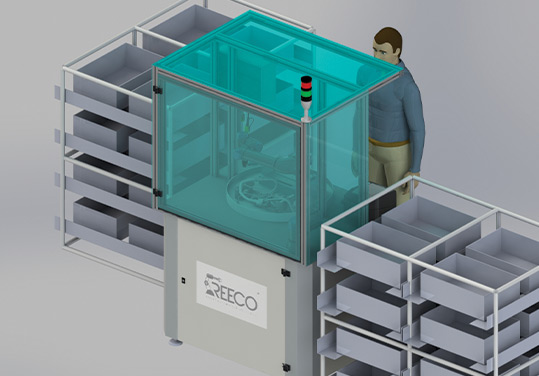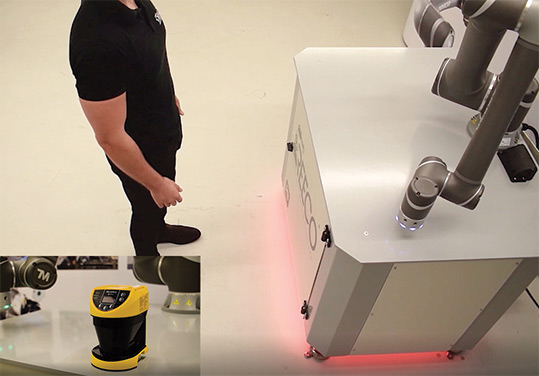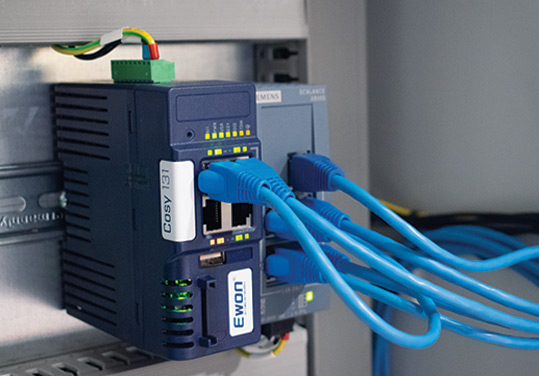ROBOTIC MATERIAL HANDLING
Pick and place applications have an array of application possibilities, but one of the most common classifications of a pick and place application is a material handling system.
Commonplace across many sectors, robotic material handling is becoming an increasingly popular choice of automating the handling of items.
As robots can be equipped with an undefined number of tooling solutions, from market ready tools to bespoke tools, they are effective in most material handling applications.
Offering repeatability, increased uptime and improved cycle times, material handling robots are an effective solution.
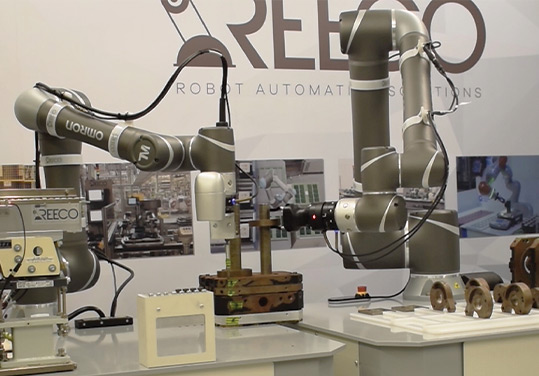

What is a Material Handling Robot?
The term ‘Material Handling’ in the robotics sense, refers to an array of product movements from one position to another. From single path movement as seen in processes like palletising and packaging, to testing and inspection where materials may be moved to several locations (testing size, weight, etc.).
Robots excel at repetitive tasks, relieving workers of monotonous and potentially straining work, while also enhancing such processes through benefits gained in speed, precision and uptime. Programmable manipulators, robots are suited to any number of material handling processes, providing a robot with the correct reach and payload is used for the task.
Material Handling Robots Deliver Real Value
Both in concept and in practise, material handling automation delivers real value to manufacturers. The main area of benefit is the dramatically improved uptime due to the manual alternative being slow, inconsistent and less productive. Robots are capable of working around the clock, only stopping for maintenance which provides significant advantages in areas such as CNC machine tending. CNC machines may require parts loading and unloading, and depending on the part there may be long wait times in between. Robots can be set up with everything they need to run overnight, continuously loading and unloading raw and machined components.


The idea of robotic machine tending can be taken a step further with the introduction of Autonomous Mobile Robots (AMR’s). AMR’s are the automation industries response to material transport and handling, aiding with internal logistics. However, this introduction has brought about new automation opportunity with the mobilisation of robot arms. The Omron mobile manipulator for example, is comprised of an AMR with a Cobot mounted on top. This would allow the robot to tend to multiple CNC machines, or collect an assortment of parts.
Manufacturing operations are under increasing pressure to produce more in less time with fewer resources. SKU variation and the consumer desire for faster delivery and convenience are becoming the new “normal” and services that were previously perks, such as free two-day shipping, are now an expectation.
Manual operations can have many variables which may lead to inconsistent results. One operator may be more productive than another, which because of changeovers may result in a later shift being more or less productive than the early shift. Implementing a robotic solution would relieve these workers and instead provide a consistent and measurable output.
Robots are programmed to complete tasks with extreme precision, robots can enhance product quality by ensuring each product receives the same treatment. Force sensing technology also available, robots can ‘feel’ which makes them great for delicate tasks.
Additional to the above benefits, in many cases robots are much quicker at material handling processes. Operating at increased speed with enhanced consistency makes robotic material handling an effective solution for most scenarios.
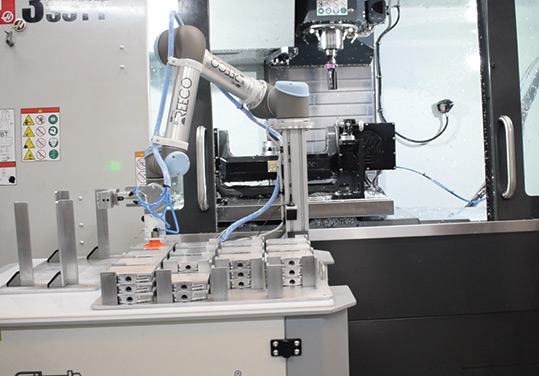
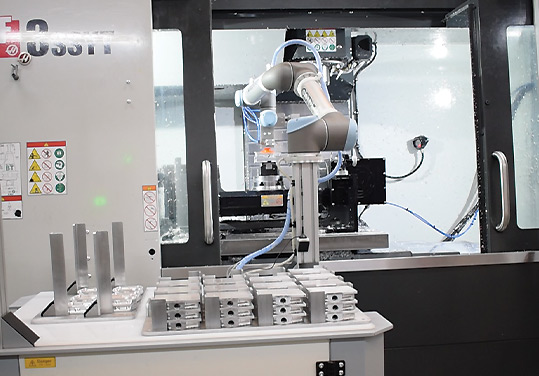
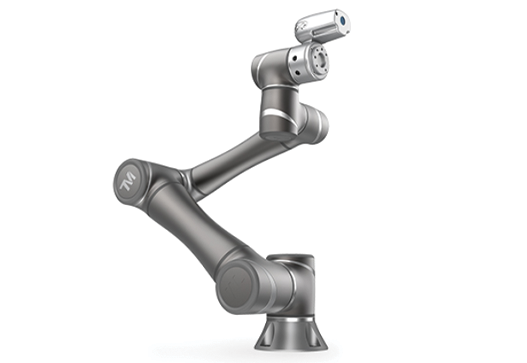
Cobot Automated Solutions
Collaborative Robots, or Cobots, are one of the newest forms of robotic automation, offering superior flexibility when compared to more traditional robots. Their size, collaborative features and deployment flexibility provide benefits within a range of robotic applications. Where more traditional industrial robot systems are bigger and typically mounted to the floor, Cobots are capable of being integrated with and around existing equipment, processes and operators. For manufacturers this opens up more automation opportunity and breaks down several automation barriers for SMEs.
Additional technologies such as force feedback provide Cobots with the ability to ‘feel’, allowing them to complete the more delicate tasks which require a measurable level of force.
Where traditional industrial robots are deployed for their production speed, Cobots bridge the gap of flexibility and size.
Advantages to Material Handling Cobots
Bridging the automation gap, Cobots enable more material handling processes to be automated, offering a solution to the lower payload processes which industrial robots don’t have the flexibility to complete.
Cobots combine the benefits of human intelligence and skills with the advantages found within robotic systems. Their programming flexibility, smart interfaces and safety features allow for a more interactive relationship with the equipment, offering real time information and programming changes, whilst working in close proximity to, or even on the same task as, operators.
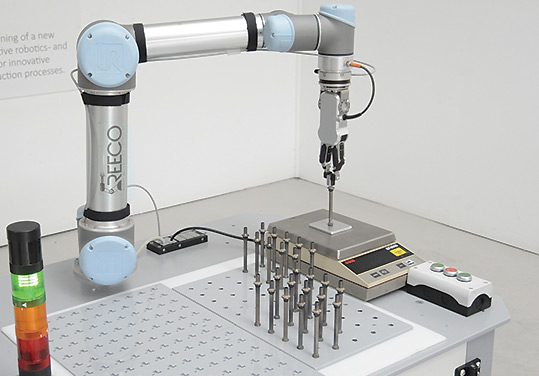
Versatile Automation Systems
Cobots reach and payload make them perfect for filling the gap where industrial robots can’t be deployed. Cobots fill the automation gap with robotics, where solutions may have been previously limited to more mechanical options, or none at all.
On-demand Automation
The introduction of Cobots brought with it advancements in software, providing us with ‘smart software’ and more user-friendly programming interfaces. This programming and configuration flexibility hands control back to manufacturers, allowing them to produce on-demand.
Flexible Robotic Application
Their small size, safety features and smart software allows for superior production flexibility. Cobots can be configured in any number of ways to best suit each application, making them a very flexible solution for manufacturers of all sizes.
Reeco aim to provide the highest standard in service and support. From initial discussions to final installation, Reeco offer support at every stage of your projects journey, from proof of concept to sophisticated safety systems, remote access systems and bespoke service packages.


